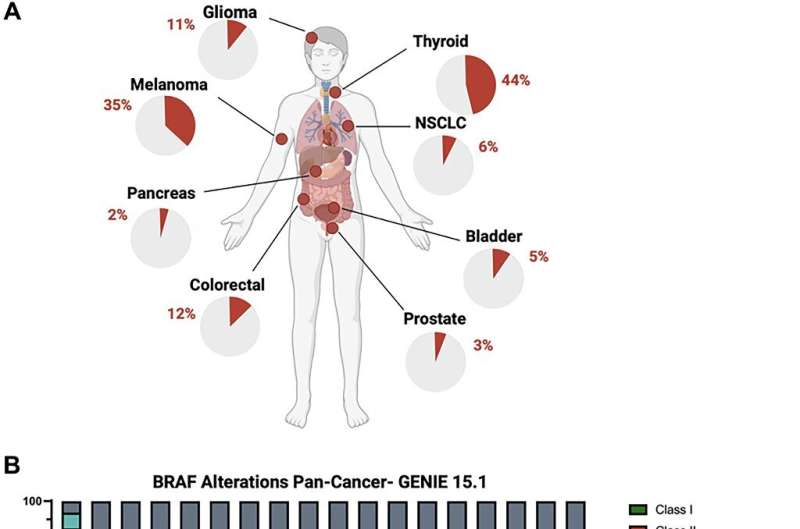This article has been reviewed according to Science X's editorial process and policies. Editors have highlighted the following attributes while ensuring the content's credibility:
fact-checked
peer-reviewed publication
proofread
New directions in targeting the multifaceted BRAF in cancer

A new research perspective titled "Targeting the multifaceted BRAF in cancer: New directions" has been published in Oncotarget.
In cancer patients, BRAF-targeting precision therapeutics are effective against Class I BRAF alterations (p.V600 hotspot mutations) in tumors such as melanoma, thyroid cancer, and colorectal cancer. However, numerous non-Class I BRAF inhibitors are also in development and have been explored in various cancers.
Researchers Eamon Toye, Alexander Chehrazi-Raffle, Justin Hwang, and Emmanuel S. Antonarakis from the Masonic Cancer Center, University of Minnesota-Twin Cities, Department of Medicine, University of Minnesota-Twin Cities, Perelman School of Medicine, University of Pennsylvania, and the City of Hope Comprehensive Cancer Center in Duarte, California, discuss the diverse forms of BRAF alterations found in human cancers and the strategies used to inhibit them in patients with cancers of various origins.
As part of their conclusion, the researchers highlight that Class I BRAF inhibitors represent a landmark achievement in precision oncology, as demonstrated by the recent tissue-agnostic FDA approval of dabrafenib/trametinib for patients with metastatic BRAF p.V600E-mutant solid tumors.
Additionally, the accelerated approval of tovorafenib for patients with relapsed/refractory BRAF-altered pediatric low-grade glioma underscores the therapeutic potential of this and other next-generation strategies targeting aberrant MAPK signaling.
More information: Eamon Toye et al, Targeting the multifaceted BRAF in cancer: New directions, Oncotarget (2024). DOI: 10.18632/oncotarget.28612



















